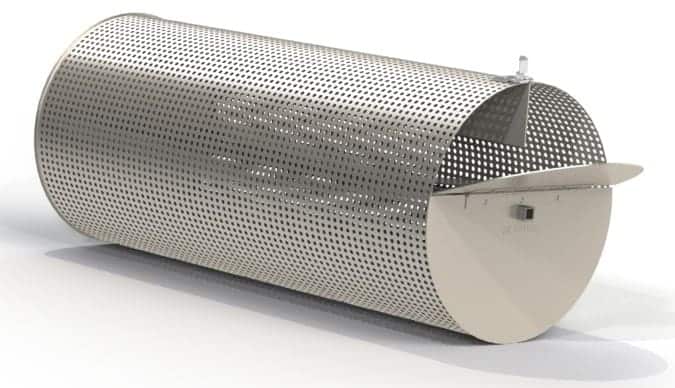
Not sure where to begin when it comes to getting your coffee into buyers’ mugs? There are a few potential sources of new customers to consider.
Friends and Family
Selling to friends and family is an excellent place to start for many microroasters. Typically, close friends and family members will be happy to support you by purchasing a bag of your coffee. Once they taste the difference in taste for the first time, they’ll be hooked. In fact, you’ll likely find that about 60%-70% of the people who try your coffee simply cannot go back to drinking their old grocery store brand. That’s how much better fresh-roasted coffee really tastes—so don’t be surprised if you have a lot of repeat customers in the form of friends and family after you’ve sold them their first bag.
Farmers' Markets
If you’re ready to expand your potential audience and put in a fair amount of time and effort to sell your coffee, then setting up at a farmers’ market can be a great avenue to new customers. The people who shop at farmers’ markets tend to be people who prefer buying craft products; they shy away from “big brands” and enjoy buying goods directly from the people who make them.
Local Retail Stores
Selling your fresh-roasted coffee in a local grocery store is another potential path to finding new customers while also spreading awareness of your brand. Even if a potential customer doesn’t buy your coffee the first time he or she sees it in stores, that customer will at least become aware of your brand name. Being on store shelves is a form of advertising in itself, so consider speaking with local grocery store (or another retail store) managers to see what it would take to get your coffee on their shelves.
Typically, a retail store will collect a percentage of each sale in exchange for the exposure. It will be up to you to decide what kind of percentage is fair and aligns with the profit margins you need to keep your business generating solid revenue.
Restaurants and Coffee Shops
Aside from retail stores, it may also make sense to have your coffee sold in local restaurants and cafes or coffee shops. When you get bags of your freshly roasted coffee on display at a coffee shop, you can take advantage of the fact that you’ll have immediate access to your target customer base (coffee drinkers).
The thing to remember here is that some coffee shops may already roast and sell their own coffee, so you’ll want to do a little research here and find one that doesn’t. You’ll also want to make sure the coffee shop or restaurant is willing to take the time needed to make and serve your coffee properly. Most places want the convenience of a pre-ground coffee packaged in a pre-measured pod to throw into an industrial roaster. But, when you pre-grind your coffee, you’ll lose the advantage of fresh roasting, as coffee ages much faster once you grind it. So, you’ll need to find a shop that appreciates the difference in serving excellent coffee.
Before you begin selling in a local cafe or coffee shop, then, be sure to sit down with the owner and inquire about their coffee-making process. Ideally, you’ll want to sell in a place that’s willing to put the time and effort into making your coffee the right away. From there, your customers will end up with the delicious taste and flavor that keeps them coming back to buy more.
Special Promotions
Offering special promotions and discounts is a great way to bring in potential new customers, especially when you consider that the majority of people who try fresh-roasted coffee for the first time will not want to go back to their store-bought brand. With this in mind, you can afford to offer some up-front discounts if it means gaining repeat customers in exchange. Even giving away small samples of your coffee can pay off in the long run because this allows people who may not otherwise see the value in buying fresh-roasted coffee the opportunity to try it first-hand.
Feel free to get creative with the promotions you offer, too. One idea to consider is to place a sticker with a promotional code on your coffee bags. Underneath the sticker, the same promotional code is printed directly on the bag. The person who purchases your coffee can then peel the sticker off and pass that sticker onto a friend, which can encourage them to purchase your coffee for the first time. From there, the promotional code that was on the original bag is automatically activated, allowing the person who referred the new customer to your brand to collect an additional discount on a future purchase. This type of discount is a great way to reward your returning customers while also encouraging new customers to try your coffee!
Neighborhood Groups
Another starting point to consider for finding new customers is a local neighborhood group. You can often find these groups on social media platforms like Facebook, Nextdoor, and the like. If you’re already in an online group for your local community, you can post that you’ve started selling your own fresh-roasted coffee and are willing to deliver bags directly to customers. Many people on these neighborhood pages are happy to support small and local businesses, and your ability to simply drop off orders at their door is an incentive as well. This can be an excellent way to gain some new repeat customers without spending any money on advertising or shipping.
Be careful before posting, though. Some neighborhood groups may have strict rules against posting promotional content on their pages, so be respectful of this.
Direct Website Sales
If you don’t already have a website set up for your coffee-roasting business, now is the time to get one launched. Direct sales from a website allow you to potentially reach customers all across the globe without the need for face-to-face interaction. And of course, having a website and an online presence helps to spread awareness and adds legitimacy to your brand. In addition to being able to buy your coffee, customers can find out more about your brand, your mission, and your team by visiting your website as well.
Just as there are unique advantages to selling directly through your website, however, there are some possible drawbacks as well. For starters, direct website sales will require you to ship your product, which can be costly and challenging. Furthermore, if popularity for your coffee spikes rapidly, you may find yourself struggling to keep up with demand while retaining the same quality you set out to offer.


